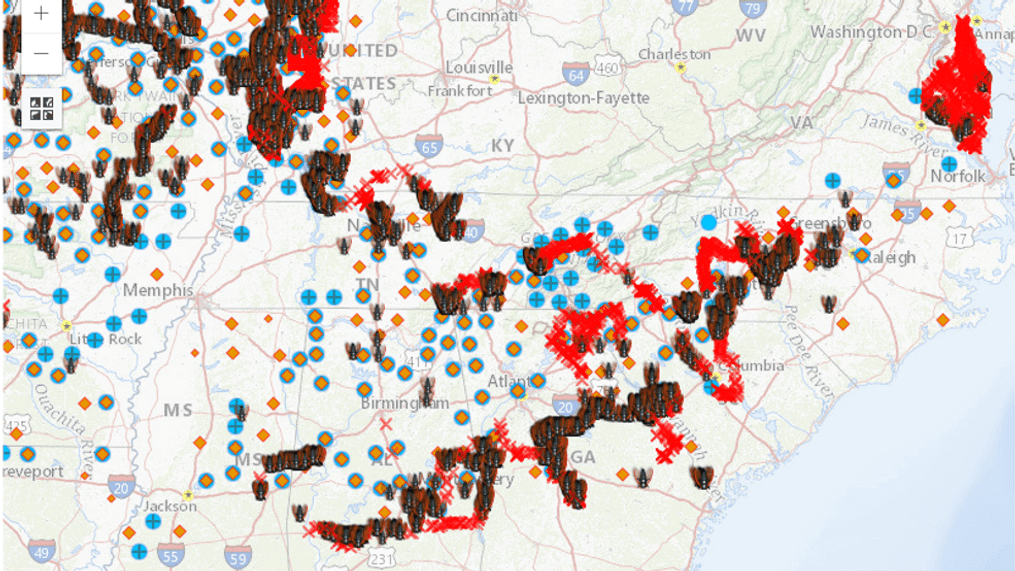Cicada mania: What to know about the 13-year emergence of Brood XIX (19)
ASHEVILLE, N.C. (WLOS) — While cicadas are causing a noisy ruckus in at least one South Carolina county, many are not yet awake in Western North Carolina.
Why? It has to do with soil temperature. Once the temperature of the soil where the cicadas live at about 8" deep warms to a steady 64 degrees Fahrenheit, they'll start sounding off. Soil temperatures are already consistently warmer in South Carolina right now.
CICADAS ARE SO NOISY IN A SOUTH CAROLINA COUNTY THAT RESIDENTS ARE CALLING THE POLICE
According to Cicada Mania, a website dedicated to all-things-cicada, a nice warm rain can trigger the brood emergence. The website says, "these cicadas will emerge after the trees have grown leaves and around the same time Iris flowers bloom."
What can we expect?
North Carolina residents in Buncombe, Cabarrus, Chatham, Davidson, Davie, Durham, Gaston, Guilford, Mecklenburg, Montgomery, Orange, Randolph, Rowan, Stanly, Union and Wake Counties can expect to see the emergence of Brood XIX (19) which includes the cicada Magicicada Tredecim. The last time we saw them in Asheville was in 2011.
These cicadas have a 13-year life cycle and can be identified by their black bodies, orange wings, orange legs, and orange stripes on abdomen. They are also orange between eye and wing, along with reddish orange eyes.
Their appearance should peak in Western North Carolina from mid-May to early June.
You'll most likely see them around trees. This brood enjoys the deciduous variety -- like maple, oak, elm, apple, pear and peach trees. They also seem to enjoy ornamental trees like red maple and plants native to Asia.
Why so many?
These cicadas emerge in massive numbers in order to overwhelm things that like to eat them. The larger numbers for this mating season will guarantee that at least a good percentage will carry on their population.
What eats cicadas?
Cicadamania.com says the better question is: what doesn't eat cicadas! Pets, rodents, marsupials, reptiles, birds, fish, insects, arachnids — virtually any creature will eat them.
Keep your eyes open for copperhead friends, especially around oak trees. They love our wooded areas and a good cicada nymph snack.
TRILLIONS OF CICADAS TO DESCEND ON US IN RARE EVENT; BIGGEST BUG EMERGENCE IN CENTURIES
Cicadas are a special treat for the cicada killer wasp. These insects specifically prey on cicadas and their larvae.
You can learn more about this big, scary looking wasps here.

